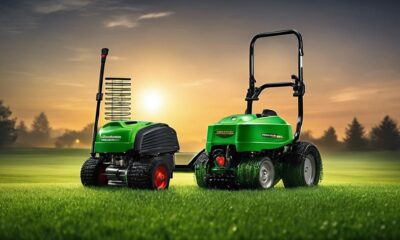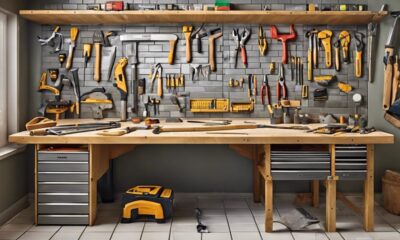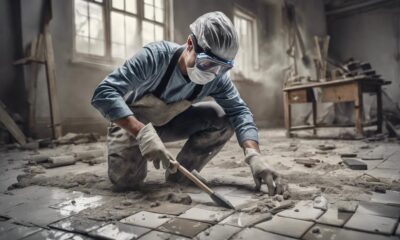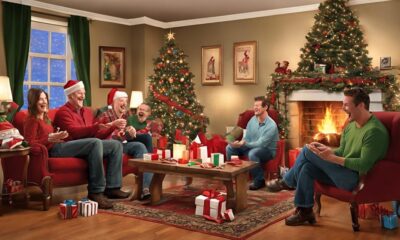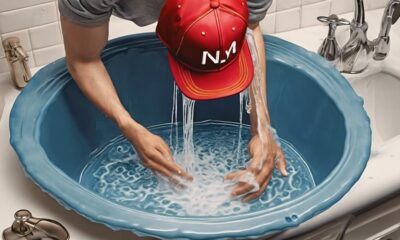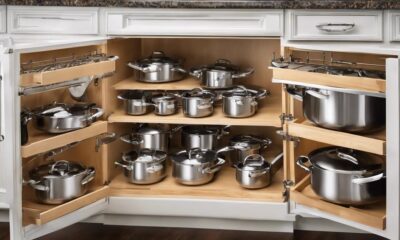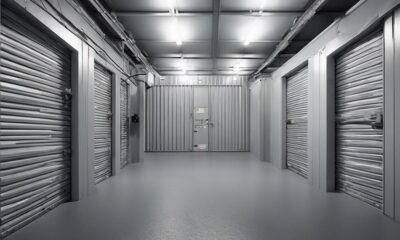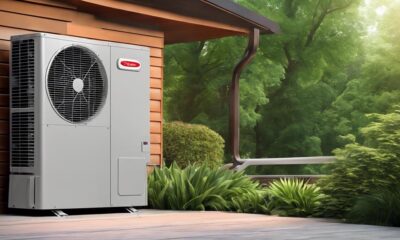Beginners Guides
Can Humidifiers Damage Electronics

We recently received a report from a user stating that their laptop stopped working after being placed in a room with a humidifier running for an extended period. This prompts the question: can humidifiers cause damage to electronics?
Many of us rely on humidifiers to maintain a comfortable indoor environment, but we may not be aware of the potential risks they pose to our electronic devices.
As we explore this topic, it's important to understand the impact of humidity on electronics and how to best protect our valuable gadgets from potential damage.
Key Takeaways
- High humidity levels can lead to corrosion and oxidation of electronic components.
- Moisture seeping into devices can cause short circuits and decreased insulation resistance.
- Excessive moisture can cause electronic components to malfunction or fail.
- Implementing measures to control humidity levels and using proper storage solutions are essential in protecting electronic equipment.
Understanding the Impact of Humidity on Electronics
We have observed that high humidity levels can adversely affect the performance and longevity of electronic devices. Excessive moisture in the air can lead to corrosion and oxidation of electronic components, causing them to deteriorate over time. When electronic components are exposed to high humidity levels, moisture can seep into the devices, leading to short circuits and decreased insulation resistance. This can compromise the functionality of the electronic devices and potentially lead to their malfunction or failure.
It is crucial for individuals who work with or store electronic devices to be aware of the potential impact of humidity on these items. High humidity levels can accelerate the degradation of sensitive electronic components, such as printed circuit boards, connectors, and integrated circuits. As a result, it's essential to implement measures to control and regulate the humidity levels in environments where electronic devices are present. This may include the use of dehumidifiers or desiccants to maintain optimal humidity levels and protect electronic equipment from potential damage.
Understanding the relationship between humidity levels and electronic components is vital for ensuring the reliability and longevity of electronic devices. By addressing the impact of humidity on electronics, individuals can take proactive steps to mitigate the risks associated with high moisture levels and preserve the performance of their electronic equipment.
Potential Risks of Excessive Moisture Exposure

Excessive moisture exposure poses significant risks to the performance and longevity of electronic devices, potentially leading to corrosion, oxidation, and decreased insulation resistance in sensitive components. Moisture damage can have detrimental effects on electronic devices, compromising their functionality and overall lifespan.
Some potential risks of excessive moisture exposure include:
- Corrosion: When electronic components are exposed to excessive moisture, they're susceptible to corrosion, which can deteriorate the metal contacts and connections, leading to malfunctions or complete failure of the device.
- Oxidation: Excessive moisture can cause oxidation of metal parts within electronic devices, leading to a degradation of their structural integrity and electrical conductivity.
- Decreased Insulation Resistance: Moisture can compromise the insulation resistance of sensitive components, leading to short circuits and electrical malfunctions within the device.
- Component Malfunction: Excessive moisture exposure can cause electronic components to malfunction, resulting in erratic behavior or complete failure of the device.
Understanding these potential risks is crucial for maintaining the proper functioning and longevity of electronic devices, especially in environments where moisture levels can fluctuate. Taking proactive measures to mitigate moisture exposure is essential in safeguarding electronic devices against these risks.
Protective Measures for Electronic Devices
To safeguard electronic devices against the potential risks associated with excessive moisture exposure, implementing protective measures is imperative to ensure their optimal performance and longevity. Moisture management and electronic care are essential components of maintaining the functionality of electronic devices. One fundamental protective measure is the use of desiccants, such as silica gel packets, within electronic device storage containers to absorb any excess moisture. Additionally, utilizing moisture-resistant storage solutions, such as airtight containers or moisture-proof bags, can provide an extra layer of protection. Furthermore, incorporating moisture-absorbing materials, like silica-based products, within the electronic device packaging can mitigate the potential effects of moisture exposure during transportation and storage. Regular inspection and maintenance of electronic devices, including cleaning with anti-static and moisture-repelling solutions, are integral aspects of electronic care. Moreover, employing moisture detectors and humidity monitors in the proximity of electronic devices can provide real-time information regarding environmental conditions, allowing for timely intervention if moisture levels become a concern. The following table illustrates various protective measures for electronic devices:
| Protective Measure | Description | Benefits |
|---|---|---|
| Desiccants | Absorb excess moisture within storage | Prevents moisture damage |
| Moisture-Resistant Storage | Airtight containers or moisture-proof bags | Provides additional protection |
| Moisture-Absorbing Materials | Silica-based products in packaging | Mitigates moisture exposure during transit |
| Regular Inspection | Cleaning with anti-static and moisture-repelling solutions | Maintains device integrity |
Best Practices for Using Humidifiers Near Electronics
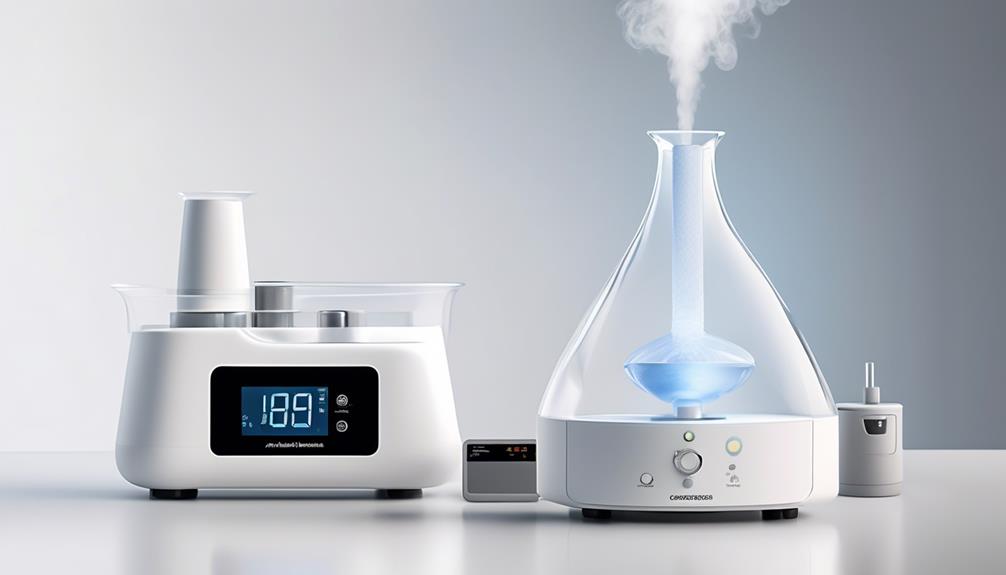
When using humidifiers near electronics, it's essential to be mindful of the potential impact of moisture on electronic devices and to implement precautionary measures accordingly. Proper positioning and moisture control are crucial to safeguarding electronics in humid environments.
Here are some best practices to consider:
- Proper Positioning: Place the humidifier away from direct contact with electronic devices. Ensure that there's sufficient distance between the humidifier and the electronics to prevent moisture from directly affecting the devices.
- Moisture Control: Use a humidity monitor to keep track of the moisture levels in the air. It's recommended to maintain the humidity level between 30-50% to prevent excessive moisture accumulation that could potentially harm the electronic equipment.
- Use Distilled Water: When refilling the humidifier, it's advisable to use distilled water to minimize the risk of mineral deposits and impurities settling on the electronic devices.
- Regular Maintenance: Perform regular maintenance on the humidifier to prevent leaks or malfunctions that could lead to unintended exposure of electronics to moisture.
Myths and Facts: Debunking Common Misconceptions
In debunking common misconceptions about the impact of humidifiers on electronics, it's important to clarify the facts and dispel any myths that may lead to misinformation.
One prevailing myth is that humidity from a humidifier can directly damage electronics. However, the reality is that while excessive moisture can indeed be harmful to electronic devices, the typical levels of humidity maintained by a household humidifier are unlikely to cause electronic damage.
Another misconception is that using a humidifier in the same room as electronics will inevitably lead to moisture-related issues. In truth, if a humidifier is used within the recommended humidity range and is well-maintained, the risk of electronic damage is minimal.
It's essential to understand that the key factor in preventing electronic damage is excessive moisture, rather than solely the presence of a humidifier.
Frequently Asked Questions
Can Humidifiers Cause Condensation to Form Inside Electronic Devices?
Moisture control in electronic equipment is crucial to prevent condensation inside electronic devices. Humidifiers, when used improperly, can lead to excess moisture and potential condensation formation in electronics.
It's essential to monitor humidity levels and use proper condensation prevention methods, such as ensuring proper ventilation and using dehumidifiers if necessary.
Regular maintenance and monitoring of humidity levels can help mitigate the risk of condensation damage to electronic devices.
Are There Specific Types of Humidifiers That Are Safer to Use Around Electronics?
When considering safer humidifier options, it's crucial to prioritize electronic-friendly humidifiers. These models minimize the risk of moisture damage to electronic devices.
Our analysis indicates that using an ultrasonic or evaporative humidifier with proper maintenance can help mitigate potential hazards. Electronic-friendly humidifiers, with their advanced technology, provide a more controlled and consistent moisture output, reducing the likelihood of condensation buildup inside electronics.
Can Humidifiers Damage the Internal Components of Electronic Devices Over Time?
Humidity control is crucial for electronic maintenance. Excessive moisture can corrode internal components, causing long-term damage. We ensure electronic devices are kept in a dry environment, minimizing the risk of damage.
Regular maintenance and monitoring of humidity levels are essential to prevent any potential harm to the electronics. It's imperative to implement measures to protect electronic devices from the negative effects of high humidity.
Should I Be Concerned About Using a Humidifier in the Same Room as My Computer or Tv?
We should be cautious when using a humidifier in the same room as our computer or TV. Humidifier precautions need to be observed to prevent any potential harm to electronic devices.
It's important to consider electronic device care when managing the humidity levels in a room. Excessive moisture can negatively impact the internal components of these devices.
Therefore, it's essential to maintain a balanced humidity level to ensure the longevity and performance of our electronics.
Can Using a Dehumidifier in the Same Room as Electronic Devices Counteract the Effects of a Humidifier?
Using a dehumidifier in the same room as electronic devices can counteract the effects of a humidifier.
Dehumidifiers work by reducing air moisture, which can benefit electronic equipment by minimizing the risk of corrosion and damage caused by excessive humidity.
Can the Black Stuff in My Humidifier Damage Electronics in My Home?
Can the black stuff in my humidifier damage electronics in my home? Humidifier black stuff prevention is essential to avoid potential damage. This black residue, often caused by mold or mineral buildup, can contaminate the air and settle on electronics, affecting their performance. Regular cleaning and maintenance, such as using distilled water and cleaning solutions specifically for humidifiers, can help prevent this issue and keep your electronics safe.
Conclusion
In conclusion, it's crucial to recognize the potential risks of excessive humidity on electronic devices.
By implementing protective measures and adhering to best practices, we can mitigate the damaging effects of moisture exposure.
Let's ensure that our valuable electronics are safeguarded from the unseen dangers of high humidity, allowing us to continue enjoying their reliable performance and longevity.
- About the Author
- Latest Posts
Introducing Ron, the home decor aficionado at ByRetreat, whose passion for creating beautiful and inviting spaces is at the heart of his work. With his deep knowledge of home decor and his innate sense of style, Ron brings a wealth of expertise and a keen eye for detail to the ByRetreat team.
Ron’s love for home decor goes beyond aesthetics; he understands that our surroundings play a significant role in our overall well-being and productivity. With this in mind, Ron is dedicated to transforming remote workspaces into havens of comfort, functionality, and beauty.
Beginners Guides
Modern Danish Design – 10 Tips To Bring It Home
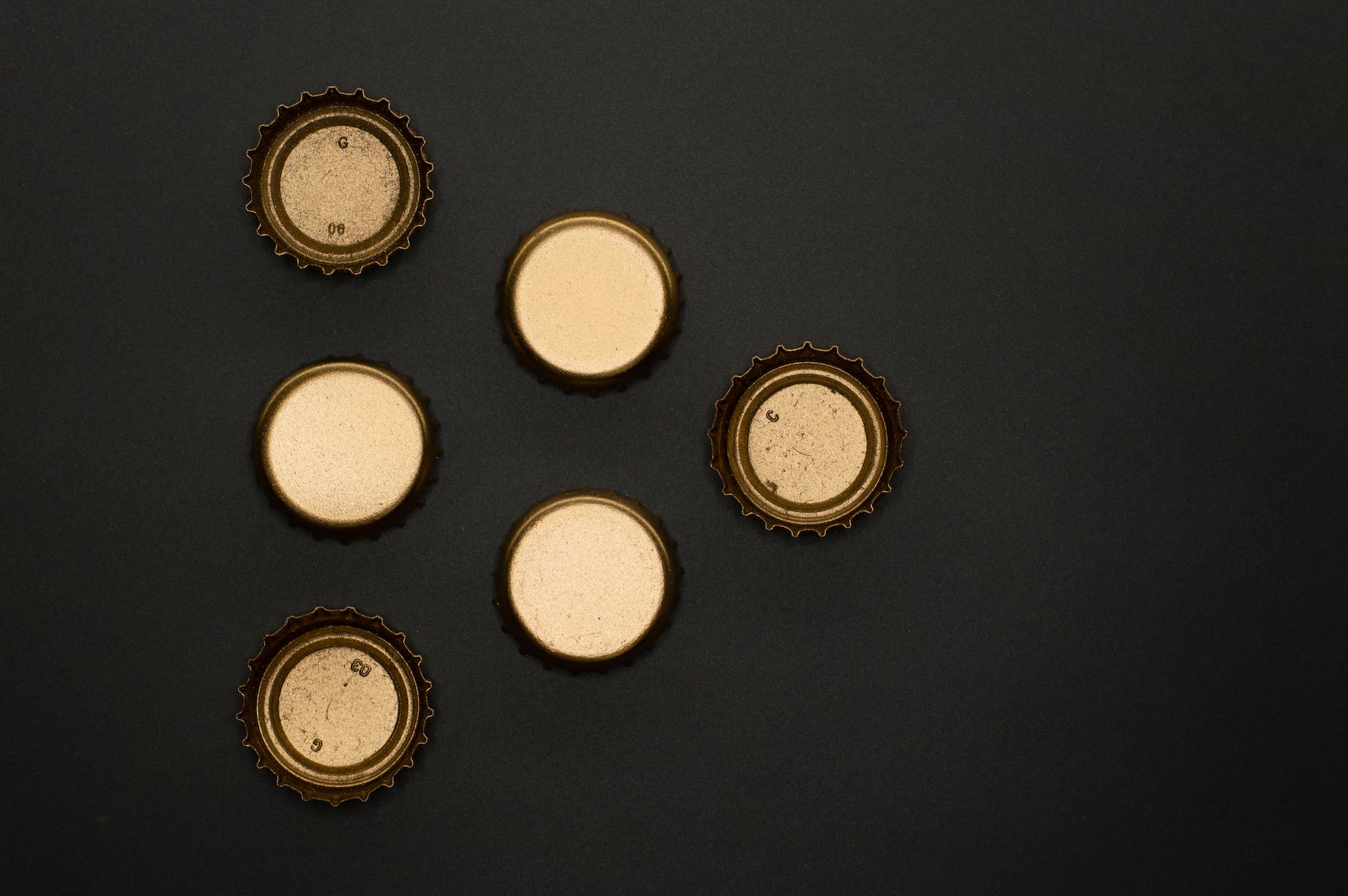
You can bring Modern Danish Design into your home in various ways. The key is to embrace the concept of Hygge, or coziness. This can be accomplished by adding corner sofas and other comfortable furniture pieces. Additionally, lighting, plants, and other small details can also contribute to creating a cozy atmosphere.
Hygge is a Danish design idea

You can add architectural designs to your furniture or decorations to bring hygge to your home. Hygge refers to living in a more relaxed and peaceful environment. You can enhance your home’s natural beauty with natural materials. Plants can be placed in empty corners to add life and beauty to your home. Plants can clean your home. An aquarium or small indoor waterfall can bring nature inside your home.
Hygge is all about soft and plush textures. They provide comfort and sound absorption. You can use them to modify the decor in your home. To create a cozy atmosphere, thick, jewel-colored wool rug can be used during the winter months. Natural jute rugs are also available during warmer months.
Hygge is an idea that has been around since the beginning of time but has gained popularity in America. Hygge has been the subject of many books and articles in the last two years. The Oxford Words of the Year also includes the concept.
Natural lighting
Danish design is known for its popular motif of candlelight. It creates a warm and romantic atmosphere. Since the 20th century, many designers have tried to replicate this effect using electric lights. These five unique Danish lighting fixtures show that modern design can still create an inviting atmosphere.
The PH 5 Pendant is a timeless Danish design. Poul Henningsen designed this pendant. It has an unusual angled shape that diffuses light. These lights come in a variety of styles and finishes. You can choose a PH5 Pendant based upon the style and colour of your room.
The UK is also home of Danish modern design. It has open floor plans and sleek furniture. It’s also well-known for creating a calm atmosphere that helps to relieve the stress of modern life.
Wooden details
Modern Danish design features wood as a common feature. This gives homes a warm, inviting feeling. Danish people love entertaining, so they have large wooden tables, cabinets, fireplaces, and other features. Natural wood tones are prominent and the details are often very simple. Sometimes, wood details can be combined to give a more sophisticated look.
Modern Danish designs often have a slightly different wood grain. These pieces are usually made of teak or European oak wood. To highlight the natural grain, the wood is lightly polished. Modern Danish design features a minimalist aesthetic. To create modern, Scandinavian-inspired pieces, designers often focus on natural materials, including teak, rosewood, and European oak.
Danish modernism also features unusual names and shapes. The Klint Stool, Jacobsen’s egg chair and Jacobsen’s stool are two examples. The chairs were designed by these two men who were inspired by the natural world. Jacobsen also designed a chair that looks like an ant’s legs.
Plants
Modern Danish design emphasizes simplicity. Danish people don’t like clutter on their tables or sideboards. They like clean, simple spaces made from natural and elegant materials. To create contrast between materials and textures, use a soft touch with neutral colours.
Hygge is key to bringing this design into your home. Hygge promotes harmony and well-being by being rooted in the small things of life. Hygge also means to enjoy the moment. Hygge is a popular design concept and home decor. It focuses on natural materials and transparent textures.
The key element is light. Contemporary chandeliers and sphere tables lamps can create tranquil pools of light that increase the sense of hygge within a space.
Unmade beds
Danish designers like to keep things simple. Unmade beds can be a great way to create an intimate feeling. Niki Brantmark is the author and designer for My Scandinavian Home. She recommends that bed sheets not be ironed or wrinkled. Modern Scandinavian design requires stonewashed linen.
Twinkly lights
Twinkly lights are a wonderful addition to your hygge decor. They can be used almost anywhere and emit a more tranquil light than candles. The heart of Danish culture is the fireplace. It is a wonderful place to gather with family and friends. It is a symbol of warmth and fire, so it makes sense to share it with the ones you love.
The Danish design firm Muuto has created the Unfold pendant, which adds twinkling light to any room . It is made of soft silicone and available in a variety of colors. It’s slim and can fit in any space.
Scandinavian design places a strong emphasis on functionality and craftsmanship. Scandinavians are close to nature and their products reflect this. Lumens has a variety of Scandinavian-based brands, so there is something for everyone.
Natural textures
If you’re looking for Scandinavian-inspired decor, consider adding some natural textures to your home. The Ferm Living Anse Vase and Pot are modern designs made from natural sand-colored clay. It is a great touch to have the balanced cylindrical handle and hand-formed handles. These handles are also available in a variety of sizes and neutral colors.
Danish design is known for its simple, minimalist style. Because of its sleek design, the furniture is ideal for small homes and apartments. The Scandinavian interior design is known for its use of neutral tones in the living room and bedrooms. This style is all about functionality. Alvar Aaltos’ stackable stool is an example of this style. It combines simplicity and function. The hygge design concept is a key component of Scandinavian design. It is Danish for “warm colors-for-a cozy-teenage girl-room coziness”. A Nordic room will look cozy and warm with natural textures and warm colours.
Color palette
Modern Danish design colors emphasize natural elements. They can be used in many different ways. You can use browns, greens, and blues to create a relaxing space. Fresh flowers and plants can bring life to your home. This interior design style focuses on simplicity, functionality, natural materials, and elegance.
Modern Danish design’s color palette reflects Scandinavian minimalism, and is connected to the natural world. Danish design is well-known for its uncluttered spaces and slab doors. You can incorporate this look into your home, whether you are a modern homeowner or a Working From Home professional.
The Scandinavian color palette consists of neutral tones mixed with pops of color. It also uses organic materials like wool and wood. Because of their closeness to nature, the Nordic countries use neutral colors to counter the often dark and cold winter months. You can add warmth to this palette by using modern wall art and pops of color.
- About the Author
- Latest Posts
Introducing Ron, the home decor aficionado at ByRetreat, whose passion for creating beautiful and inviting spaces is at the heart of his work. With his deep knowledge of home decor and his innate sense of style, Ron brings a wealth of expertise and a keen eye for detail to the ByRetreat team.
Ron’s love for home decor goes beyond aesthetics; he understands that our surroundings play a significant role in our overall well-being and productivity. With this in mind, Ron is dedicated to transforming remote workspaces into havens of comfort, functionality, and beauty.
Beginners Guides
DIY Small Craft Room Ideas
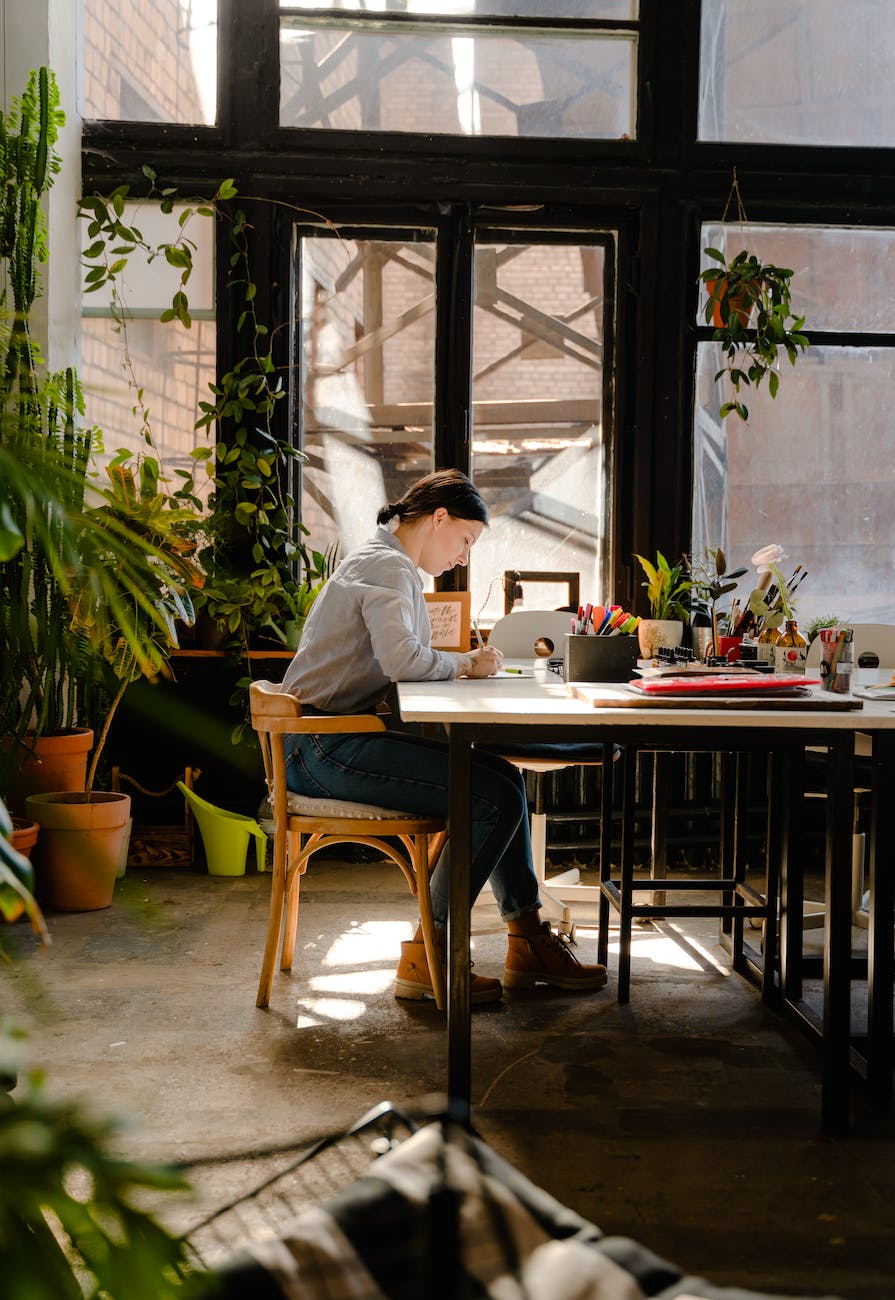
A compact DIY crafting space is ideal for showcasing your creative talents. There are numerous ways to optimize space while keeping costs low. Effective storage is key in a crafting area. Small crafting spaces can benefit from wall-mounted storage solutions like a pegboard or metal grid. Utilize hangers to neatly store craft supplies, or opt for a mix of baskets and boxes for additional storage options.
Shelving units with open and closed shelves
Both open and closed shelving units can be used to make your craft room appear more spacious and organized. Open shelving allows you to easily see what your room has, but too many open shelves can create a feeling of clutter. Open shelving should not be used excessively.
Floating shelves
Floating shelves can be a great option if you have limited space. These shelves are the ideal way to store all types of stuff. Large open shelving units can be combined with drawers and shelves to provide ample storage. Alternative to shelves, ledges can be used.
Lazy Susan
A Lazy Susan makes storage a breeze. You can use this piece to organize small items, no matter how small your craft area is. You can organize your crafting supplies by spinning it and rotating them on it. Lazy Susans can also be used to decorate shelves. It can store small items or flower vases.
Glass shelf
A glass shelf can be a great way to organize your crafting supplies. This storage solution works well for Cricuts. You can also store scissors and other supplies.
Rolling storage carts
Rolling storage carts can be great for people with limited space. These carts can be placed under your desk or in your closets and allow you to easily access your crafting supplies. You can choose from a range of colors, and they come with storage inserts.
Labels
Labels are a great way to organize your workspace. These labels can be made by either using a cutting machine, or printed out and cut by hand. Affiliate links may be included in this post. These links earn us a small commission on sales made via the links.
Craft tables
A craft table with storage is a great option if your craft space is small and cramped. You will have more space and easier access to your supplies. Because they can be used in smaller spaces, craft tables are an excellent choice.
Pegboards
Pegboards are a great storage option, but can also be personalized. You can customize your pegboard storage by creating an organizer. This DIY project is simple and easy. You can find detailed instructions here to help you make it.
- About the Author
- Latest Posts
Introducing Ron, the home decor aficionado at ByRetreat, whose passion for creating beautiful and inviting spaces is at the heart of his work. With his deep knowledge of home decor and his innate sense of style, Ron brings a wealth of expertise and a keen eye for detail to the ByRetreat team.
Ron’s love for home decor goes beyond aesthetics; he understands that our surroundings play a significant role in our overall well-being and productivity. With this in mind, Ron is dedicated to transforming remote workspaces into havens of comfort, functionality, and beauty.
Beginners Guides
Wood Burning Ideas For Creative Gifts
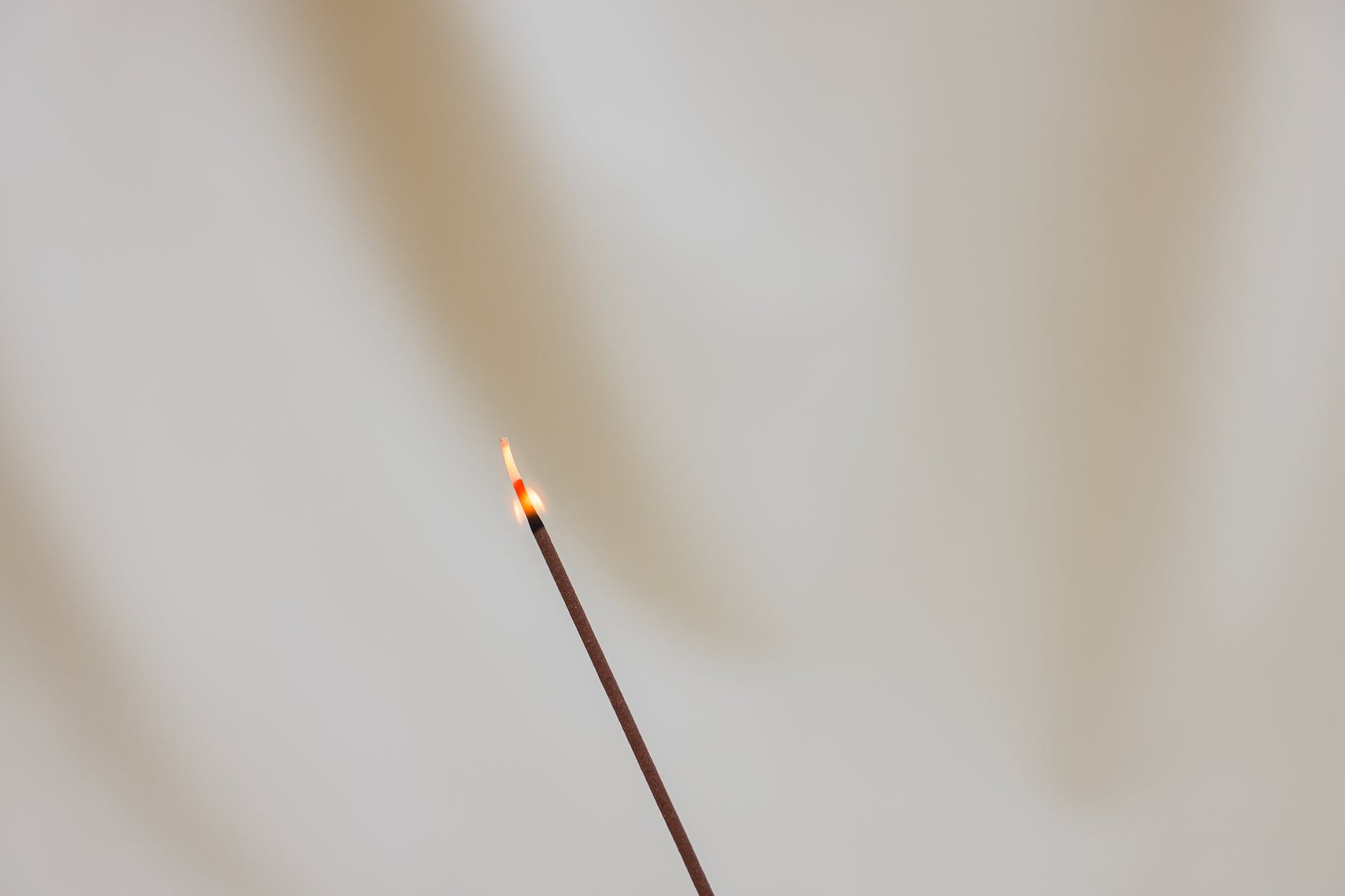
Wood burning is an enjoyable method for crafting unique gifts. It can be utilized to produce a range of items such as coasters and trays. Ornaments are a sought-after gift choice and can be adorned with various pictures or festive designs. Additionally, you can create stylish bangles or earrings through wood burning. These pieces can be enhanced with delicate patterns or embellishments. Enhance your collection with decorative belt buckles using wood burning techniques.

Coasters personalized
Wood burning is an original way to personalize coasters. This ancient craft is quickly becoming one of the most popular DIY crafting styles. This method allows you to burn images onto wood, creating beautiful designs. The possibilities are limitless, whether you want to create a coaster for a friend, or add a personal touch on a gift.
A coaster can be made with just a date and a name, or it can be personalized with symbols and pictures. To play your favorite music, you can also put a Spotify code into the wood. Coasters personalized with your name and message are great for any occasion.
You can personalize your pattern to reflect you and your taste. You can choose between a number of quilt block designs and your own design. You can also burn a simple doodle on your coasters. If you want them to look like a quilt, you can make a series of circles and dots. Another great idea to personalize coasters is country decor.
Personalized spoons
First, you must select a design to use with your wood-burning spoons. Either draw the design on paper, or take a photograph. Use a pencil to trace the design onto the wood. To draw the design, use a Crayola pencil or a writing pencil. After you’ve created your outline add black ink.
Cut a piece of transfer tape slightly larger than your design . Next, apply the tape to the design and rub it to make sure it sticks. After the tape has adhered, flip the design upside down and place it on top of the spoon’s head. This vinyl will not be able to lay flat on a curved surface. It will likely have some wrinkles. These can be removed later.
There are many options to ensure safe wood-burning spoon foods. There are many sealers available, including Tung Oil. It can be applied directly to the wood burnt area or to the whole wooden spoon. Some designs are floral or botanical in nature.
Tin cans personalized
Tin cans can be customized in many ways. You can paint them, or use decorative tape to add color and pattern. They can be labeled with a unique brand name. To add some flair, you can decorate the cans with sequins or beads.
Tin cans can be personalized for many purposes. They can be used to make pencil holders or flower vases. You can make a simple tin can a keepsake for special occasions such as weddings and birthdays. It can be personalized with a message or illustration.
Another great wood-burning idea? Personalizing jewelry. It is possible to create earrings that are unique for any occasion, including Valentine’s Day and Halloween. These earrings can be made in many ways, and you could even learn calligraphy. You can also use the same technique to personalize a wooden container. Melissa Esplin has a great tutorial on how to use this technique.
Personalized trays
A wooden tray is a beautiful and unique gift idea. You can stain wood any color you like and have a message inscribed on it. Wooden trays can be personalized with a message or personalization to make unique gifts.
These personalized trays make wonderful gifts for weddings, new parents and roommates. These trays can be made from solid wood or a medium walnut stain. You can personalize the tray with the name of the couple, or the year that the family was established. This is a unique gift idea that will make a great gift for weddings, new parents, and roommates who feel they are part of the same family.
Wood-burnt serving trays are a unique way to present food. You can use one to serve sandwiches. You can customize them to fit the needs of each recipient.
- About the Author
- Latest Posts
Introducing Ron, the home decor aficionado at ByRetreat, whose passion for creating beautiful and inviting spaces is at the heart of his work. With his deep knowledge of home decor and his innate sense of style, Ron brings a wealth of expertise and a keen eye for detail to the ByRetreat team.
Ron’s love for home decor goes beyond aesthetics; he understands that our surroundings play a significant role in our overall well-being and productivity. With this in mind, Ron is dedicated to transforming remote workspaces into havens of comfort, functionality, and beauty.
-

 Vetted4 days ago
Vetted4 days ago15 Best Boxwood Varieties for Thriving in Full Sunlight
-

 Vetted1 week ago
Vetted1 week ago15 Best Ways to Label Clothes for Nursing Home Residents – Stay Organized and Efficient
-

 Vetted5 days ago
Vetted5 days ago15 Best Dryer Vent Hoses to Keep Your Laundry Room Safe and Efficient
-

 Vetted5 days ago
Vetted5 days ago15 Best Spider Sprays to Keep Your Home Arachnid-Free
-

 Vetted4 days ago
Vetted4 days ago14 Best Cleaners for Aluminum Surfaces – Shine Bright Like a Diamond
-

 Vetted5 days ago
Vetted5 days ago15 Best Nightstand Charging Stations to Keep Your Devices Organized and Ready to Go
-
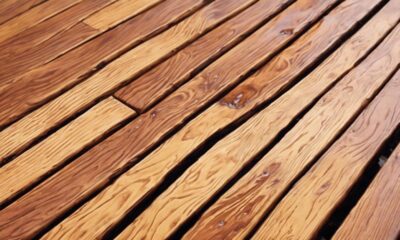
 Vetted10 hours ago
Vetted10 hours ago15 Best Ways to Waterproof Wood for Ultimate Protection and Longevity
-

 Beginners Guides3 days ago
Beginners Guides3 days agoHow to Slow Down My Ceiling Fan to Reduce Wind Chill





